FIT CTU
Adam Vesecký
vesecky.adam@gmail.com
Lecture 4
Components
Architecture of Computer Games
Adam Vesecký
Game Model
What is a Game Model
Game model is a model of a domain in which the simulated world takes place.
Game Model
- Gameplay and all mechanics are incorporated into a game model
- Game model can be divided into several parts: domain model, view model, networking model,...
- A game engine updates the model and interprets it to the player
- With each update, the current state of the model is drawn on screen
- State - values of all attributes of a model at a given point in time
Game Model
Domain Model
- contains rules, game mechanics and essential data to the gameplay
Presentation Model
- a model represented to the player
- e.g. played sounds, animated sprites
Physics model
- all entities that take part in physical interaction
AI model
- all data and structures that are processed by AI (navigation maps, behavioral trees,...)
Networking model
- everything that has to be in sync with other models on other devices
Example: Super Mario Bros.

Game Model
- The more complex the system, the more complex the models
- Simple games have a tiny domain model that can be easily detached from other parts
- Complex games have highly coupled respective models
Example: Chess
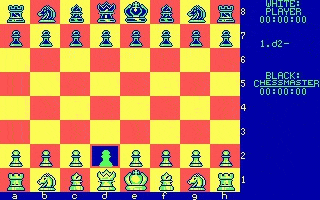
Chessmaster 2000 (1986)
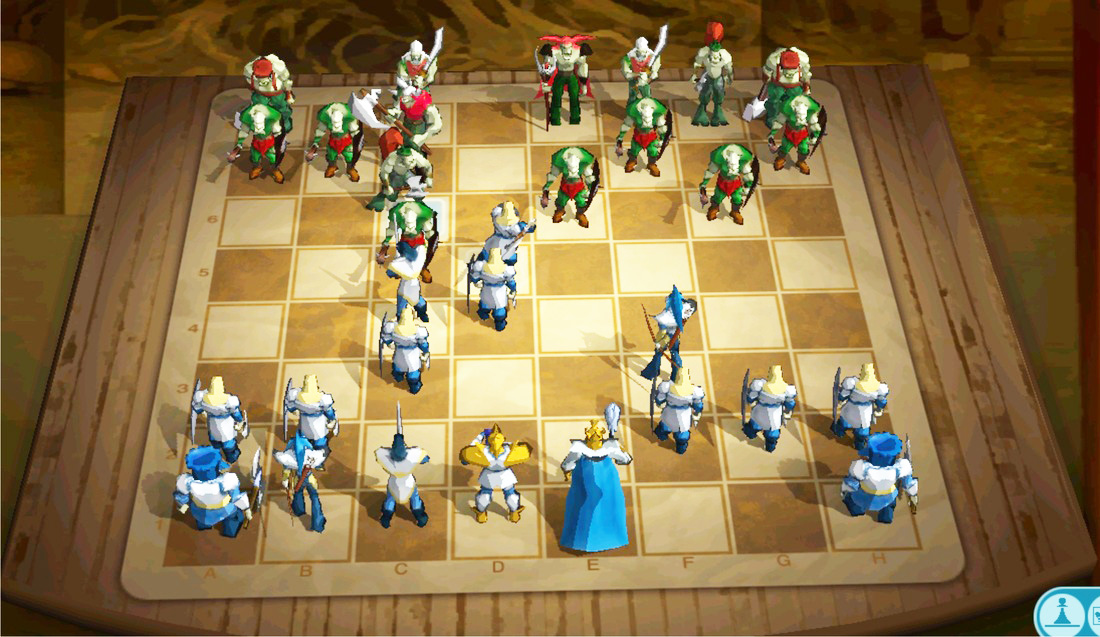
Chessmaster 11 (2007)
Chess Model
Chess models
| Chessmaster 2000 | Chessmaster 11 | |
|---|---|---|
| Domain model | Board, pieces, time, game rules | Board, pieces, time, game rules |
| Presentation model | CGA Sprites, beep sounds | Animated 3D objects, 3D sounds |
| Physics model | None | Rigidbody engine |
| AI model | David Kittinger's engine | King engine |
| Networking model | None | Move commands |
Example: Pacman
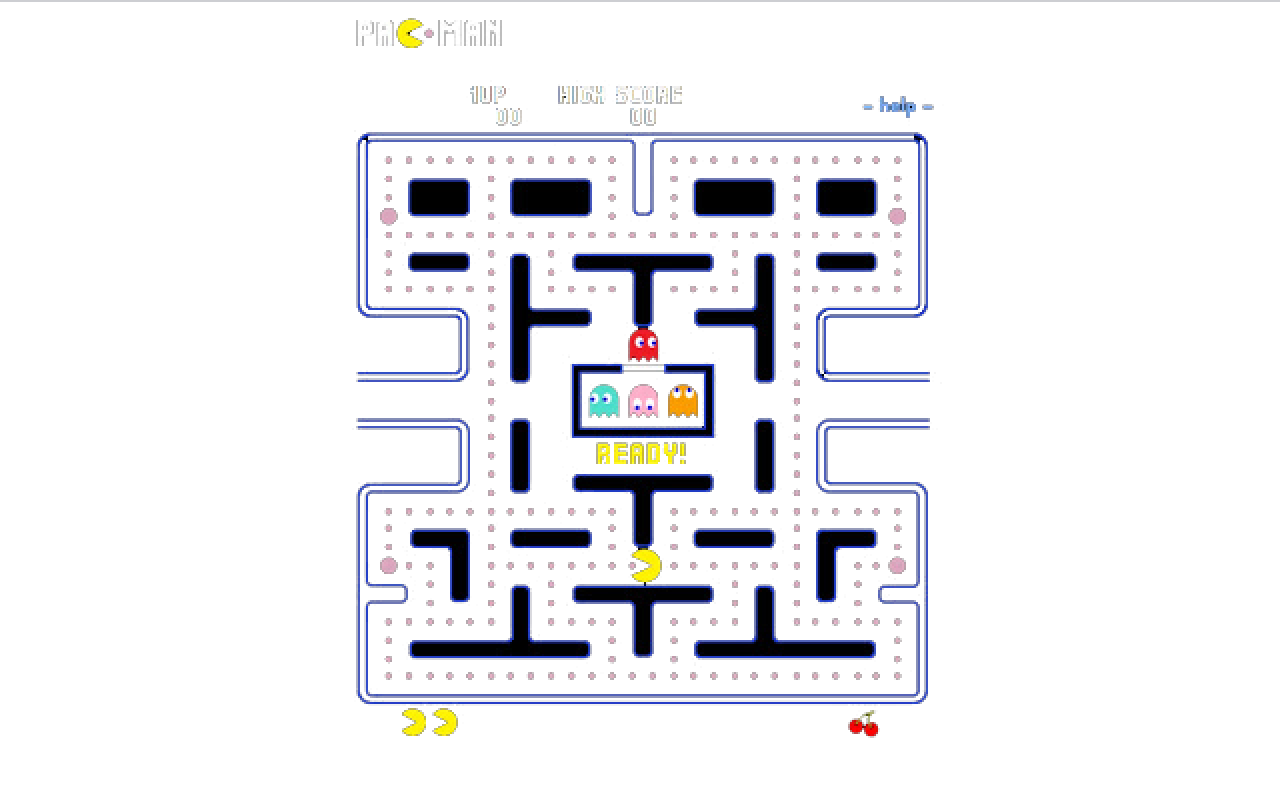
Pacman architecture
Example: Strategy
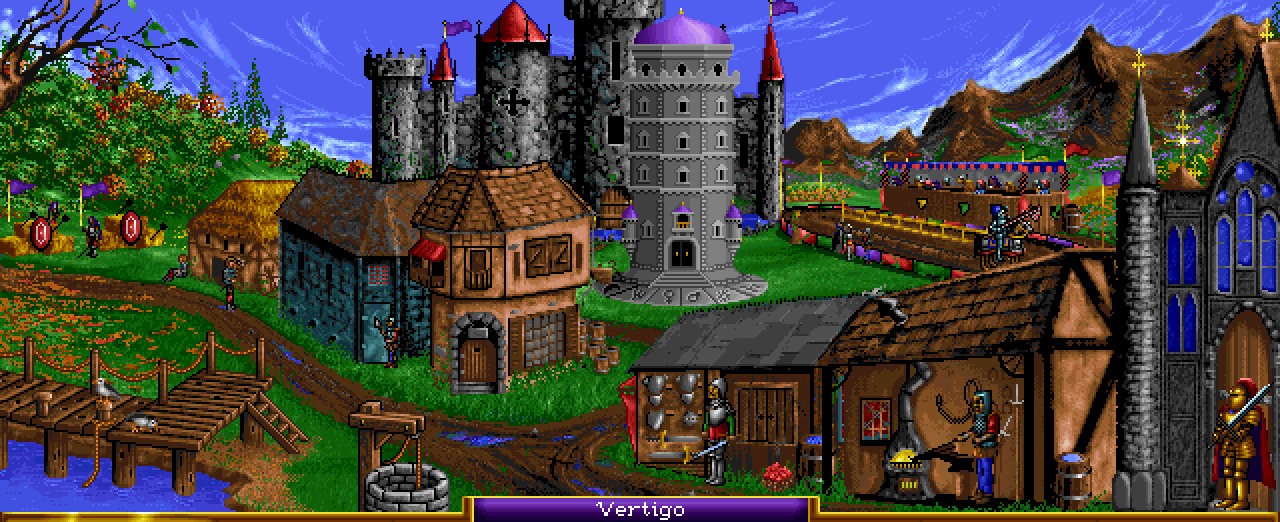
Heroes of Might and Magic
Heroes of Might and Magic architecture
Example: Adventure
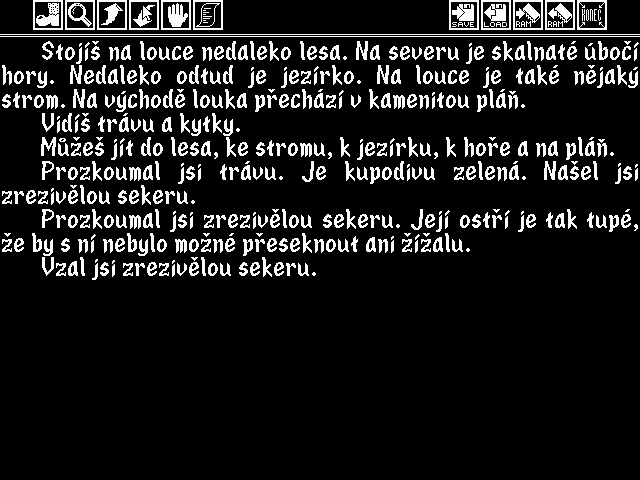
Belegost (1989)
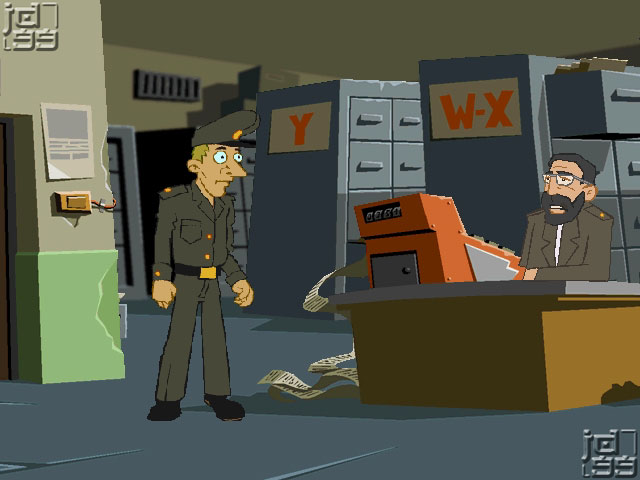
Polda (1998-2020)
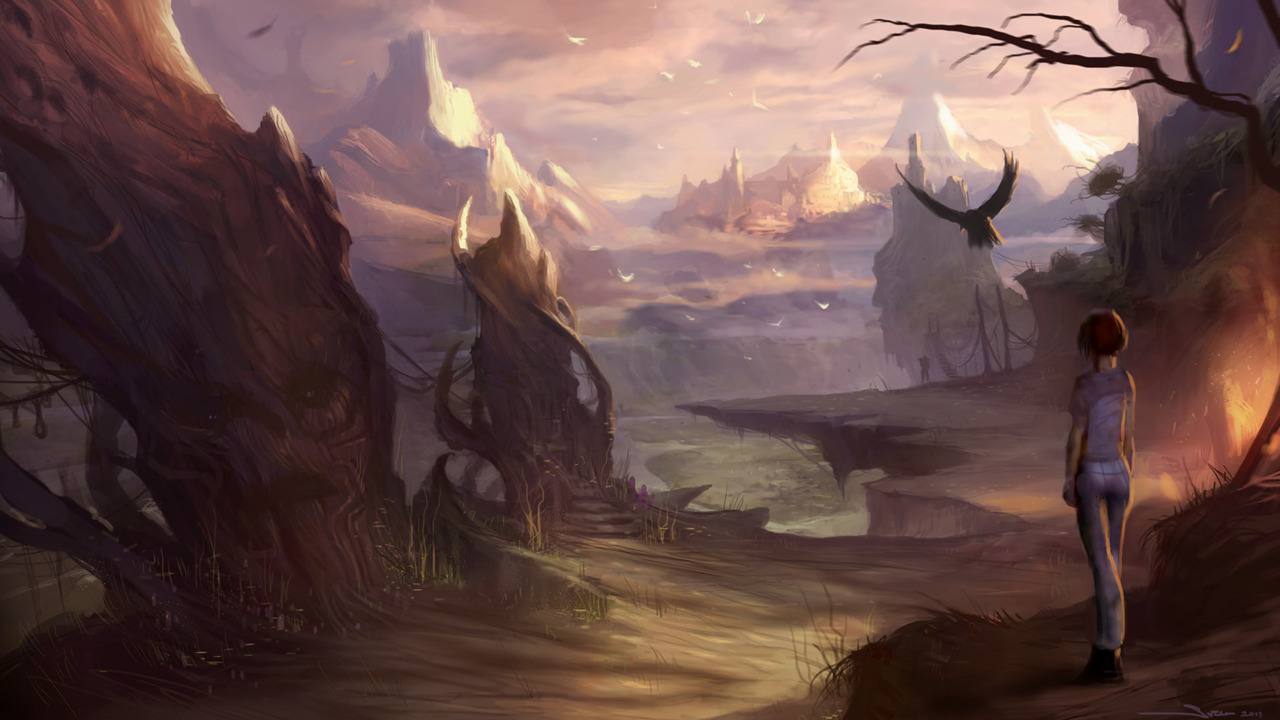
Dreamfall Saga (1999-2016)
Adventure architecture
Adventure events

Object-oriented architecture
Example: Platformer Scene
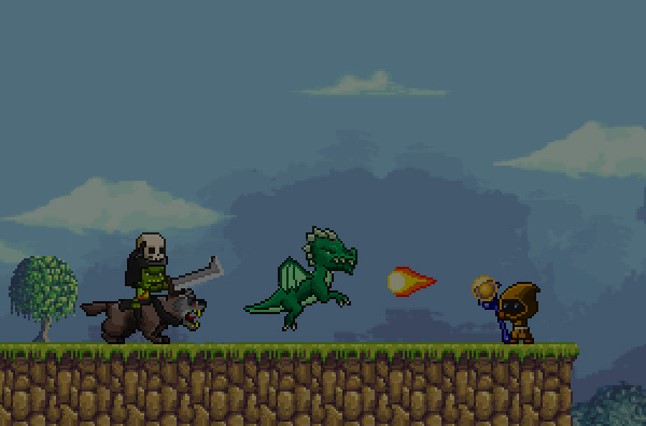
Hierarchy for the model
How things may get messed up
Issues
- dragon may have ability to use mana
- opt. a) rework the object hierarchy
- opt. b) move mana to a base class
- mage may have ability to transform himself into a dragon
- opt. a) create a new object DragonMage
- opt. b) add a reference to an object the mage has transformed into
- orc may have ability to walk on foot
- add more states
- mage may have an inventory of items affecting his abilities
- we might want to add a dozen features during the development without the necessity of rearranging the class hierarchy
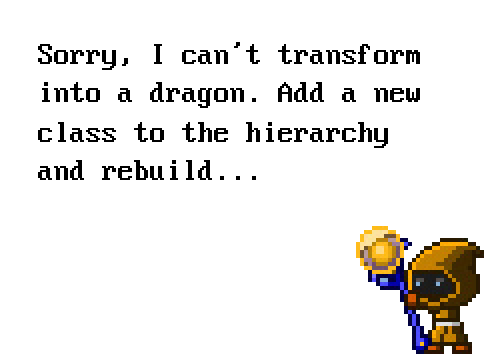
Not every set of relationships can be described in a directed acyclic graph
Generalizing
This may work for attributes but not for game logic
All-purpose object pattern
- used in 90's and early 2000's
- one class determines behavior of every game object
- lots of switches and if-checks
Example: Doom 2
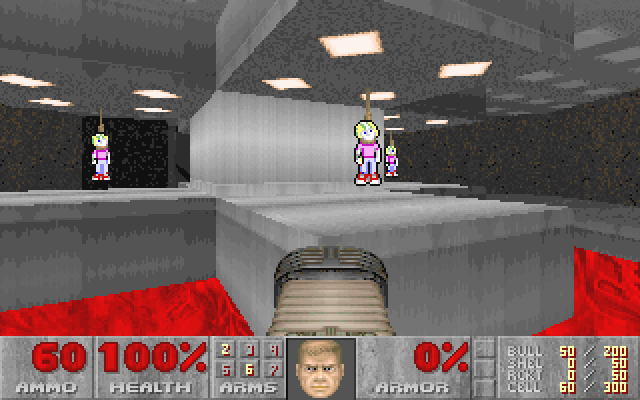
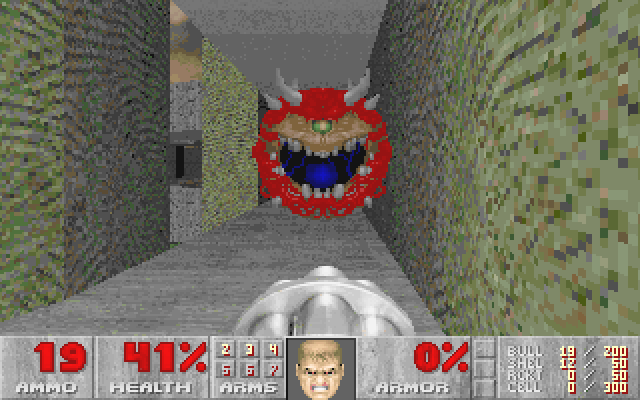
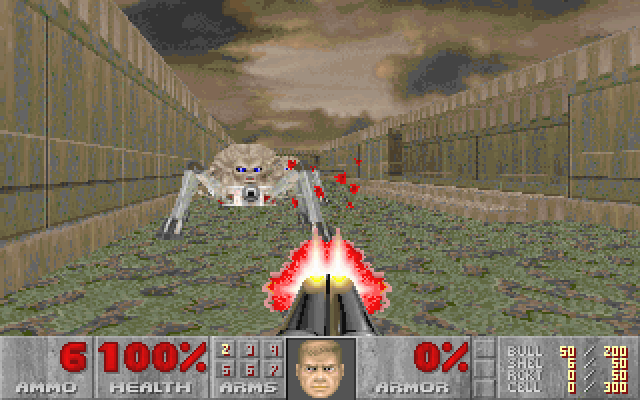
Object-oriented architecture: summary
- The most common way of expressing object hierarchy is via OOP and inheritance
- This approach works well for games with a tiny model and a weak emergence
- In case of more complex games we can end up with thousands of dependencies
- Inheritance is insufficient relation for relationship modelling
- We need to use composition, and that's where the component architecture comes into place
Summary
- simple
- fast prototyping
- low overhead
- easy to debug
- hard to maintain
- hard to scale
- not flexible
- game objects may have not needed features
Component-oriented architecture
Component
- a unit of composition with specified interfaces and explicit context dependencies
- components are plug-and-play objects
- prefers composition over inheritance
- behavior of an entity is determined by the aggregation of its components
- Dungeon Siege (2002) - one of the first games featuring component-based systems
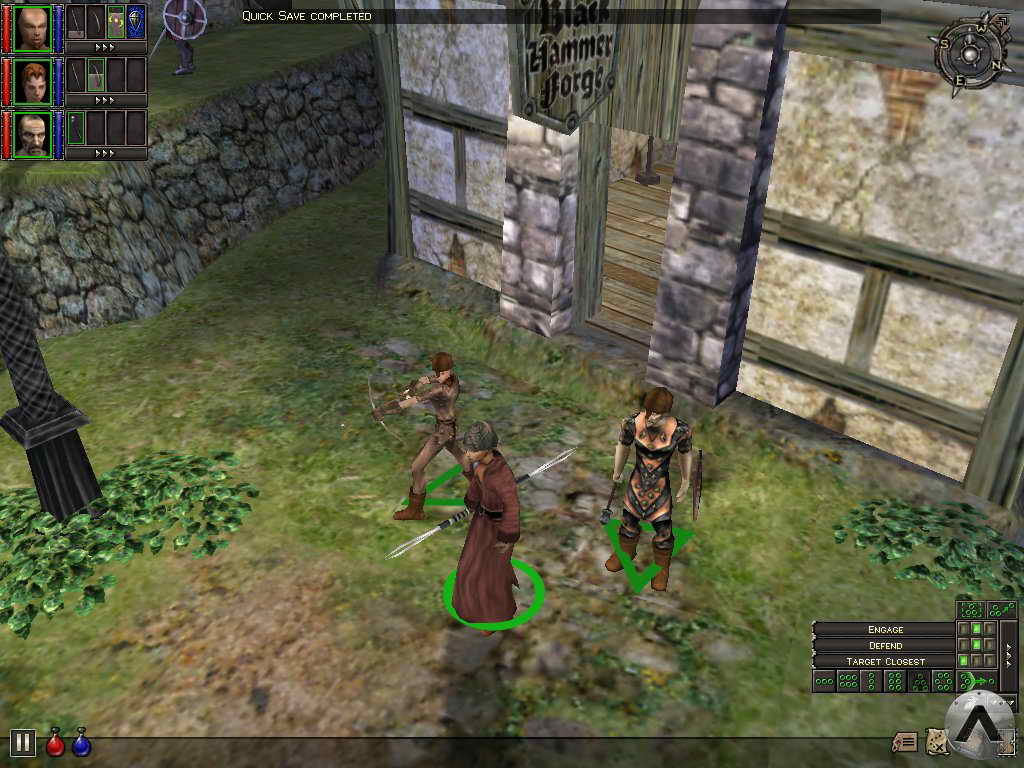
ECS Pattern
- Entity-Component-System
- common pattern for component-oriented libraries and engines
- game object is just a container for data and logic
- components are attached to their game objects
- can be easily integrated into scene graph
Terms
Entity
- a single entity/game object, usually incorporated into a scene graph
Attribute
- data unit attached to an entity
Property
- data unit attached to a component
Component
- instantiable unit that defines simple functional behavior
System
- a superior component responsible for a bigger scope (HealthSystem, GameManager, AudioSystem)
The naming varies. Some engines use behaviours for components, components for systems, property for attributes etc.
Example: Platformer
- attributes are DATA, components are CODE
ECS Architecture in C++
ECS example
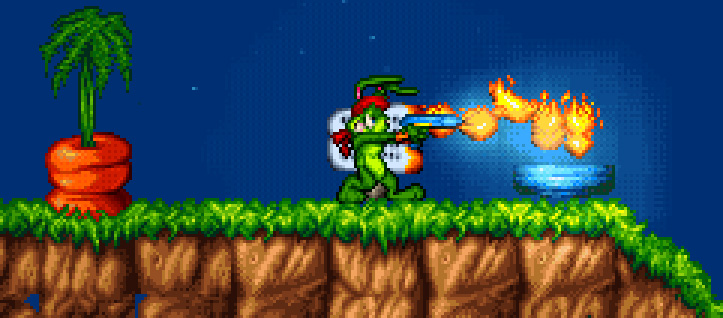
Example: Pacman
Pacman
Stage
- parent of all game objects
Maze
- model of the maze, contains location of dots, power-pellets etc.
GameManager
- controls the game as a unified whole
- may be responsible for collision handling (e.g. by killing pacman or a ghost)
BoxBehavior
- game logic of the center box
PacmanBehavior
- controls the movement of Pacman using the InputManager
Where is the game model?
- we can put it in attributes, components or both
- if it's an attribute, it can be detached and tested separately, but we need to keep it in sync
- if it's a component/system, it can make full use of the architecture
Simple games
- one tiny model that contains game rules and global attributes, stored in the root element
- game entities have their logic implemented in respective components
- game model can be used as an API layer by all components
Complex games
- game rules are implemented in systems (physics, relations, triggers)
- components customize behavior of individual game elements
Example: Platformer

Example: Paratrooper
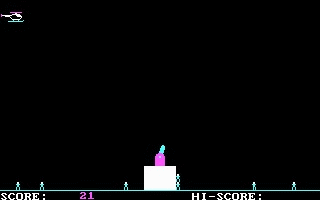
Example: Driver
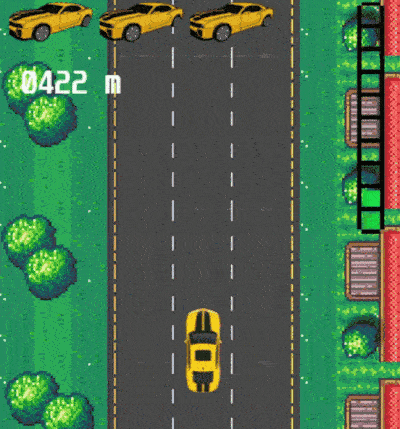
Component-oriented architecture: summary
- scalable
- data-oriented
- components are easy to reuse
- easy to make new object types
- polymorphic operations for components
- dynamic typing - everything is assembled at runtime
- all depedencies have to be wired together
- the code must be written in a generic way
- refactoring may become annoying
- harder to debug
Messaging
Messaging possibilities
By modifying the container object's state
- e.g. shared state machine
- indirect communication
- difficult to debug
By direct calls
- OOP way
- fast, but increases coupling
- we need to know what to call
- e.g. calling a global component that is always present
By using a message broker
- events and commands
- each component can declare interest in relevant messages
- slower than the direct call
- e.g. listening to GAME_OVER event and stopping the game
Message Broker
- components should be notified of any state change that is relevant
- can be used for returning values (danger of feedback deadlock)
- a handler can be implemented inside components - OnMessage() function
- processing can be instant or delayed/scheduled
- Event - a message informing that something happened
- Command - a message instructing that something should happen
Message Types
Unicast
- a component sends a message to another component
- in most cases, this can be handled by a direct call
- example: pause the game
Multicast
- a) component sends a message to subscribers
- b) component sends a message to all objects that meet specific criteria
- example: notify all nearby units that the player has entered the area
- example: collision trigger - notify all subscribers
Broadcast
- rarely used, usually for global messages
- example: level completed, game over
Example: Atomic Game Engine Event Passing
| 1 | void Object::SendEvent(StringHash eventType, VariantMap& eventData) { |
| 2 | SharedPtr<EventReceiverGroup> group(context->GetEventReceivers(this, eventType)); |
| 3 | if (group) { |
| 4 | group->BeginSendEvent(); |
| 5 | |
| 6 | for (unsigned i = 0; i < group->receivers_.Size(); ++i) { |
| 7 | Object* receiver = group->receivers_[i]; |
| 8 | // Holes may exist if receivers removed during send |
| 9 | if (!receiver) continue; |
| 10 | |
| 11 | receiver->OnEvent(this, eventType, eventData); |
| 12 | |
| 13 | // If self has been destroyed as a result of event handling, exit |
| 14 | if (self.Expired()) { |
| 15 | group->EndSendEvent(); |
| 16 | context->EndSendEvent(); |
| 17 | return; |
| 18 | } |
| 19 | processed.Insert(receiver); |
| 20 | } |
| 21 | group->EndSendEvent(); |
| 22 | } |
| 23 | } |
Example: Unity Messages
| 1 | public interface ICustomMessageTarget : IEventSystemHandler |
| 2 | { |
| 3 | // functions that can be called via the messaging system |
| 4 | void Message1(); |
| 5 | void Message2(); |
| 6 | } |
| 7 | |
| 8 | public class CustomMessageTarget : MonoBehaviour, ICustomMessageTarget |
| 9 | { |
| 10 | public void Message1() |
| 11 | { |
| 12 | // handle message |
| 13 | } |
| 14 | |
| 15 | public void Message2() |
| 16 | { |
| 17 | // handle message |
| 18 | } |
| 19 | } |
| 20 | |
| 21 | // sending message |
| 22 | ExecuteEvents.Execute<ICustomMessageTarget>(target, null, (x,y) => x.Message1()); |
Example: Unreal Message Bus
- facilitates communication between application parts via Message Passing
- messages are classified into commands and events
- all messages are wrapped into IMessageContext, containing additional information
Message Broker Summary
- allows to make the game event-based
- components can react on any message that goes into event bus
- not intended for per-frame processing
- once established, it's not easy to revise the messaging architecture
- if there is something that should run every frame, it's better to use polling or direct call
- avoid expensive processing in OnMessage handler
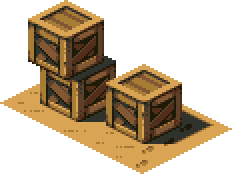
Component-oriented game engines
Component-oriented game engines
Artemis framework
- https://github.com/junkdog/artemis-odb
- Java, ported to C#, ECS implementation in its essential nature
Atomic Game Engine
- https://github.com/AtomicGameEngine/AtomicGameEngine
- C++, forsaken, but still a good source of inspiration
Unity
- ECS architecture
Unreal Engine
- hybrid component architecture
Godot Engine
- signal-passing architecture
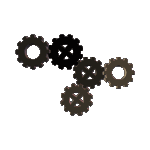
Example: Artemis Engine
- Systems encapsulate logic, components encapsulate data
| 1 | // new component |
| 2 | public class Health extends Component { |
| 3 | public int health; |
| 4 | public int damage; |
| 5 | } |
| 6 | |
| 7 | // new archetype |
| 8 | Archetype dragonArchetype = |
| 9 | new ArchetypeBuilder() |
| 10 | .add(Flaming.class).add(Health.class).build(world); |
| 11 | |
| 12 | public class MovementSystem extends EntityProcessingSystem { |
| 13 | public MovementSystem() { super(Aspect.all(Position.class, Velocity.class)); } |
| 14 | } |
| 15 | |
| 16 | // create new transmuter |
| 17 | this.transmuter = new EntityTransmuterFactory(world) |
| 18 | .add(FrozenFlame.class).remove(Flaming.class).build(); |
| 19 | |
| 20 | // apply transformation to entity |
| 21 | this.transmuter.transmute(entity); |
Unity
- ECS architecture with messaging system
- MonoBehaviour can encapsulate both data and logic
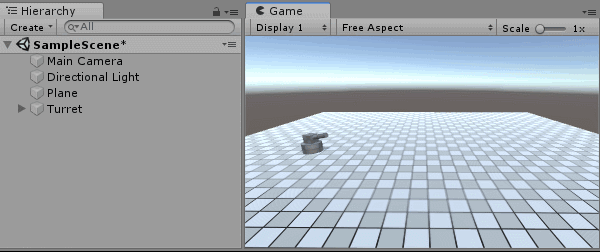
Unity Architecture
Unity Game Object
| 1 | public sealed class GameObject : Object { |
| 2 | public static extern GameObject CreatePrimitive(PrimitiveType type); |
| 3 | public unsafe T GetComponent<T>(); |
| 4 | public T[] GetComponents<T>(); |
| 5 | |
| 6 | public extern Transform transform { get; } |
| 7 | public extern void SetActive(bool value); |
| 8 | public extern string tag { get; set; } |
| 9 | public static extern GameObject FindGameObjectWithTag(string tag); |
| 10 | |
| 11 | public void SendMessage(string methodName, object value); |
| 12 | public void BroadcastMessage(string methodName, object parameter); |
| 13 | |
| 14 | public Scene scene {get;} |
| 15 | |
| 16 | public Component rigidbody {get;} |
| 17 | public Component rigidbody2D {get;} |
| 18 | public Component camera {get;} |
| 19 | public Component light {get;} |
| 20 | public Component animation {get;} |
| 21 | public Component renderer {get;} |
| 22 | public Component audio {get;} |
| 23 | |
| 24 | public void PlayAnimation(Object animation); |
| 25 | public void StopAnimation(); |
| 26 | } |
Example: Platformer2D
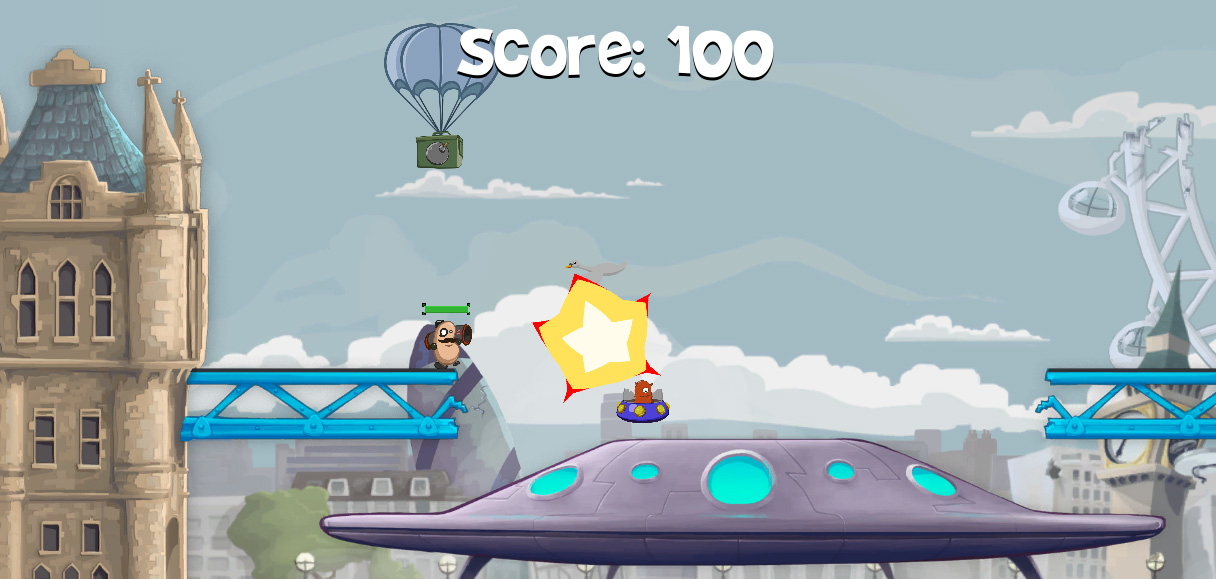
Example: Platformer2D Scene Graph
Example: Platformer2D Events
| 1 | // RocketComponent |
| 2 | void OnTriggerEnter2D (Collider2D col) { |
| 3 | // If it hits an enemy... |
| 4 | if(col.tag == "Enemy") { |
| 5 | // ... find the Enemy script and call the Hurt function. |
| 6 | col.gameObject.GetComponent<Enemy>().Hurt(); |
| 7 | // Call the explosion instantiation. |
| 8 | OnExplode(); |
| 9 | // Destroy the rocket. |
| 10 | Destroy (gameObject); |
| 11 | } |
| 12 | // Otherwise if it hits a bomb crate... |
| 13 | else if(col.tag == "BombPickup") { |
| 14 | // ... find the Bomb script and call the Explode function. |
| 15 | col.gameObject.GetComponent<Bomb>().Explode(); |
| 16 | |
| 17 | // Destroy the bomb crate. |
| 18 | Destroy (col.transform.root.gameObject); |
| 19 | |
| 20 | // Destroy the rocket. |
| 21 | Destroy (gameObject); |
| 22 | } |
| 23 | } |
Component-oriented libraries
Unity DOTS
- https://unity.com/dots
- multi-threaded, wires ECS with the Job system
EnTT
- https://github.com/skypjack/entt
- header-only C++ library, pure ECS
Entitas
- https://github.com/sschmid/Entitas-CSharp
- ECS Framework for Unity, ported to many other languages
A-Frame
- https://aframe.io
- declarative framework for virtual reality, built on top of ThreeJS
ECSY
- https://ecsy.io
- experimental ECS framework for PixiJS, ThreeJS and BabylonJS
Example: ECSY Framework
| 1 | var world = new World(); |
| 2 | world |
| 3 | .registerSystem(MoveSystem) |
| 4 | .registerSystem(RendererSystem); |
| 5 | |
| 6 | class MoveSystem extends System { |
| 7 | execute(delta, time) { |
| 8 | this.queries.moving.results.forEach(entity => { |
| 9 | let pos = entity.getMutableComponent(Position); |
| 10 | pos.x += entity.getComponent(Velocity).x; |
| 11 | }); |
| 12 | } |
| 13 | } |
Lecture Summary
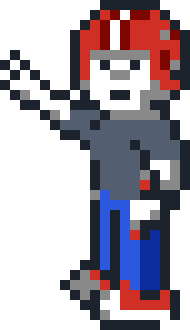
- I know what a game model is and what is it made of
- I know the pitfalls of object-oriented architecture in games
- I know what a component is
- I know the ECS pattern
- I know messaging practices for component architecture
- I know the purpose of a message broker in games
Goodbye Quote
The weak suffer. I endure.Planescape Torment